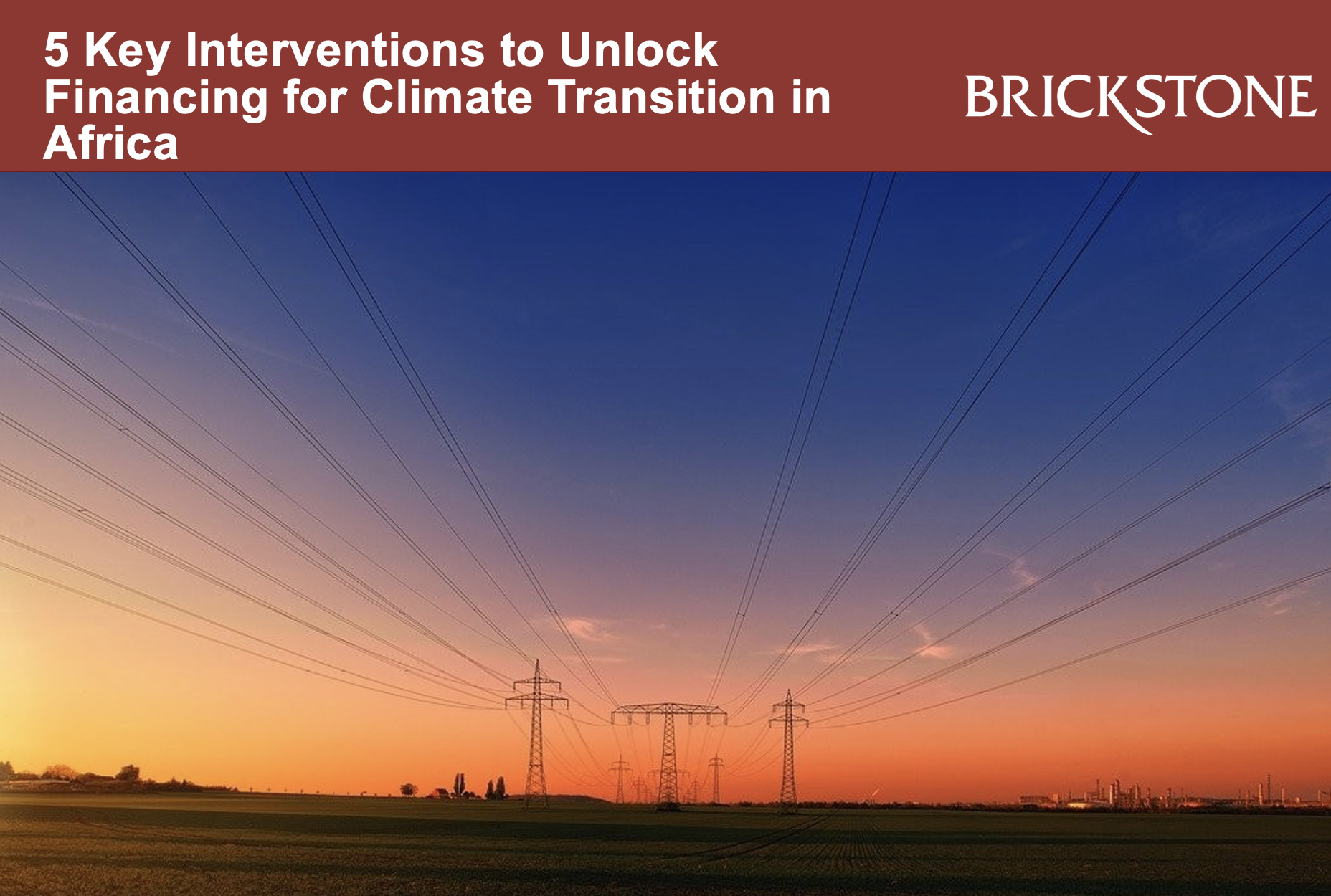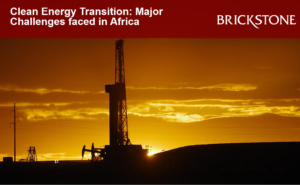5 Key Interventions to Unlock Financing for Climate Transition in Africa
Climate Transition in Africa
September 2023 was the month of summits, and these summits held monumental importance for the African continent: The Africa Climate Summit, the United Nations Climate Ambition Summit, the SDG Summit, and the G20 Leaders’ Summit. These summits marked a pivotal moment to reflect on the progress made and on the unfinished business in tackling and averting the impacts of climate change.
One challenge persists—the barriers to financing climate projects in Africa.How can climate action projects thrive in the face of constrained financing? What barriers hinder the financing of a just and equitable transition in Africa? And what practical interventions can unlock climate finance? These questions become even more significant at a time when many countries are dealing with elevated debt levels and strained public finances amidst multiple crises.
The complementarity between climate action and sustainable development is indisputable. The inseparable link between sustainable economic growth and climate action is undeniable—they must be pursued concurrently, or neither will happen. Addressing climate change not only safeguards the environment but also directly influences poverty eradication (SDG 1), access to clean water and sanitation (SDG 6), affordable and clean energy (SDG 7), sustainable cities and communities (SDG 11), responsible consumption and production (SDG 12), life on land and below water (SDGs 14 and 15), infrastructure (SDG 9), reduced inequalities (SDG 10), decent work and economic growth (SDG 8), and zero hunger (SDG 2).
This article by Brickstone reviews CGD’s publication on how to break financing barriers for a just climate transition in Africa, highlighting key action items and insights.
Financing Barriers for Climate Transition in Africa
Financing barriers reveal that the global climate finance system is inefficient, insufficient, and unfair. Strained national budgets and unsustainable debt levels are intertwined with unsupportive policy frameworks, inconsistent regulation, and insufficient private sector engagement. Additionally, heightened perceptions of investment risk in Africa, perceived and real foreign currency risks, the complexity of existing international climate finance mechanisms, and data limitations, collectively curtail climate-aligned investments.
The challenge of climate financing in Africa is not due to a lack of a pipeline of investable projects. The continent is rife with investable projects. In 2022, the UN High-Level Champions held regional forums showcasing more than 100 shovel-ready projects in African and other developing countries. There is a real need to champion the matching of project developers with public and private financiers.
There is an urgent need for systemic reforms to the international financial architecture (IFA). The IFA has long been plagued by structural deficiencies, and reforms are needed to make the global financial system truly global and representative for emerging markets and developing economies (EMDEs). The Sharm El-Sheikh Implementation Plan called on multilateral development banks (MDBs) and international financial institutions (IFIs) to reform their practices and priorities to make climate finance more accessible.
Recent developments have underscored the urgent need for IFA reforms. The Bridgetown Initiative recently outlined specific reforms by UN member states, G20 creditors, IMF, World Bank, MDBs, and other public, multilateral, and private creditors. The Summit for a New Global Financial Pact in Paris called for renewed relations between the Global North and the South to facilitate the access of vulnerable countries to financing. The Marrakesh Declaration, signed by ministers of finance in Africa, also explicitly outlined “An African Agenda for Global Financial Architecture ” and insisted on a global financial architecture that includes Africa not only as a beneficiary but also as a contributor of ideas, innovations, and investment possibilities.
In light of this, the following five interventions to unlock financing for climate transition in Africa are proposed by the CGD:
Suspend and reduce debt for low- and middle-income countries, including the use of innovative debt swaps and revision of SDRs: We call for the suspension and reduction of debt for low- and middle-income countries (LMICs). G20 creditor countries should accelerate debt relief and cancellations, and MDBs urgently need to implement the Climate Resilient Debt Clauses. The clauses were developed in response to the Sustainable Debt Coalition created at COP27 in Egypt. Equally, we endorse the debt proposals of the Bridgetown Initiative.
Extend below-market-rate or concessional capital to EMDEs: We propose that MDBs, including the World Bank, provide LMICs with a 1 percent interest rate, a 10-year grace period, and a 20-year repayment term for financing projects that boost resilience to climate change. These concessional terms need to be supported by the climate finance contributions of advanced economies. Furthermore, we urge governments and development agencies to establish substantial and adaptable pools of concessional capital to support smooth and transparent financing of climate projects, in line with countries’ Nationally Determined Contributions (NDCs).
Credit enhancement and credit guarantee schemes to incentivize private sector participation: We call for credit enhancement and guarantee schemes that can provide credit assurances and effectively offer project de-risking, encouraging private investors. Credit assurances enhance investor confidence, driving private sector involvement through co-financing and risk-sharing. In line with this proposal, we endorse the call by the Bridgetown Initiative for public, multilateral, and private creditors to refinance high-interest, short-term debt with credit guarantees and longer maturities.
Foreign exchange (FX) guarantee mechanism: We call for the establishment of a fund that helps private investors mitigate foreign exchange risks by providing cost-effective currency hedges for climate action investments in Africa. This Multi-Partner Trust Fund (MPTF) would help reduce the real and perceived risk of investing in climate projects amidst currency volatility. For effective risk management of capital-intensive climate projects, an FX guarantee mechanism is vital, as currency risk can sometimes overshadow macro-risk in some economies.
A turbocharger facility for climate action projects and entrepreneurs in Africa: We call for the creation of a turbocharger facility for projects and entrepreneurs running project preparation programs on the continent. This is especially important for projects that can regenerate nature and help communities adapt to climate change impacts. Currently, existing project preparation facilities are still too small, hard to access, and largely disconnected from follow-on funding and de-risking mechanisms. This facility does not need to be a brand-new fund with cumbersome infrastructure; it could be set up by existing funders and investment instruments already operating in Africa.
Read the complete publication here.
Why not contact us to make your Project Happen
Our advisors and consultants would be able to schedule an online meeting with you to discuss your project with the overall objective of seeking ways to achieve the “bankability” and protection of the long term asset value of your project. Request a Meeting Now






